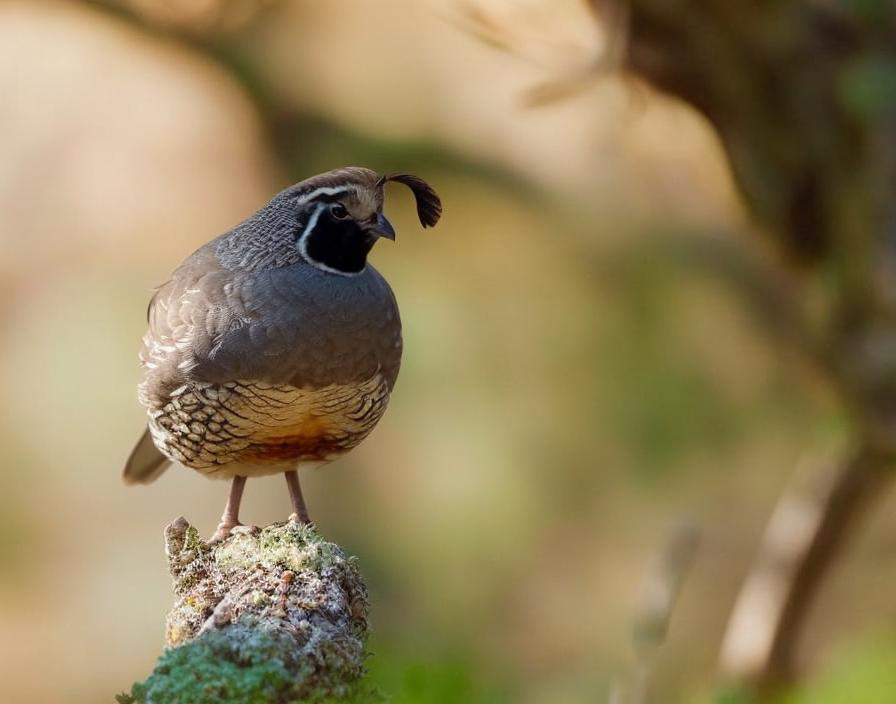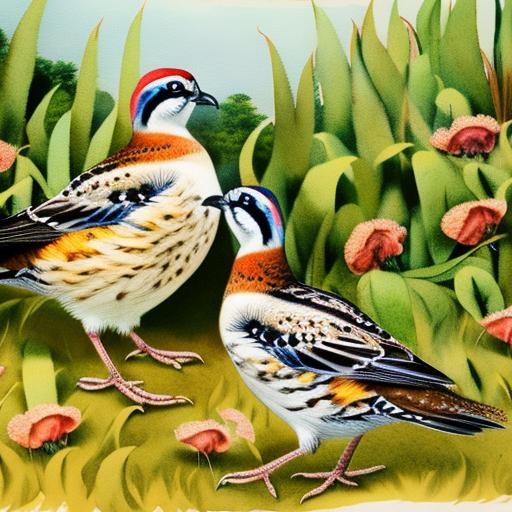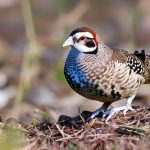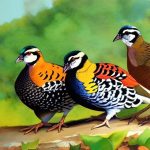Heritage quail breeds play a crucial role in preserving genetic diversity and cultural heritage. These breeds have been passed down through generations and are often deeply rooted in the history and traditions of various cultures. By conserving heritage quail breeds, we are not only protecting genetic resources but also safeguarding the unique traits and characteristics that make these breeds valuable. Additionally, heritage quail breeds often possess traits that make them well-suited for specific environments or purposes, such as foraging ability, disease resistance, or adaptability to local climates. By maintaining these breeds, we can ensure that future generations have access to a diverse gene pool that can be utilized for breeding programs and research.
Furthermore, heritage quail breeds contribute to the cultural and culinary heritage of communities around the world. Many of these breeds have been raised for centuries for their meat, eggs, and feathers, and have become an integral part of traditional cuisines and culinary practices. By preserving these breeds, we are also preserving the cultural traditions and knowledge associated with their rearing and utilization. In a rapidly changing world where industrialized agriculture and globalization threaten the diversity of livestock breeds, the conservation of heritage quail breeds is essential for maintaining a sustainable and resilient food system.
Key Takeaways
- Heritage quail breeds play a crucial role in preserving genetic diversity and cultural heritage in the poultry industry.
- Heritage quail breeds are known for their hardiness, adaptability, and unique color patterns, making them valuable for both conservation and exhibition purposes.
- Popular heritage quail breeds include the Coturnix, Bobwhite, and Gambel’s quail, each with distinct characteristics and traits.
- Conservation efforts for heritage quail breeds involve maintaining purebred populations, promoting sustainable breeding practices, and raising awareness about their importance.
- Breeding and raising heritage quail requires proper housing, nutrition, and care to ensure the health and well-being of the birds and to maintain genetic purity.
- Heritage quail are prized for their flavorful and nutritious meat, eggs, and even their delicate, small bones, making them a versatile ingredient in various culinary dishes.
- Preserving the legacy of heritage quail breeds involves supporting breed associations, participating in breeding programs, and promoting responsible consumption and appreciation of these unique birds.
Characteristics and Traits of Heritage Quail Breeds
Heritage quail breeds are known for their unique characteristics and traits that set them apart from commercial quail varieties. These breeds often exhibit a wide range of plumage colors and patterns, making them visually striking and attractive for ornamental purposes. Additionally, heritage quail breeds are valued for their ability to thrive in free-range or pasture-based systems, where they can exhibit natural behaviors such as dust bathing, foraging, and socializing. This makes them well-suited for small-scale and sustainable farming operations that prioritize animal welfare and environmental stewardship.
Moreover, heritage quail breeds are prized for their flavorful meat and eggs, which often have distinct taste profiles compared to those of commercial quail. Whether it’s the rich, gamey flavor of Coturnix quail or the delicate, creamy taste of Bobwhite quail eggs, each heritage breed offers a unique culinary experience. Furthermore, these breeds often have a slower growth rate compared to commercial quail, resulting in a more robust and flavorful meat. Their ability to thrive on a varied diet of insects, seeds, and greens also contributes to the superior taste and nutritional quality of their products.
Popular Heritage Quail Breeds
Several heritage quail breeds have gained popularity among breeders and enthusiasts for their unique characteristics and cultural significance. The Coturnix quail, also known as the Japanese quail, is one of the most widely raised heritage breeds due to its prolific egg-laying ability and flavorful meat. With its diverse plumage colors and patterns, the Coturnix quail is also prized for its ornamental value in aviculture. Another popular heritage breed is the Bobwhite quail, native to North America and known for its distinctive call and excellent meat quality. The Bobwhite quail has been an important game bird for centuries and is highly valued for its role in traditional hunting and sporting activities.
In addition to these well-known breeds, other heritage quail varieties such as the Gambel’s quail, California quail, and Mearns quail are also cherished for their unique traits and cultural significance in different regions. Each of these breeds has its own set of characteristics that make them valuable for conservation and utilization in various agricultural and cultural contexts. By promoting the conservation and responsible stewardship of these popular heritage quail breeds, we can ensure that their genetic diversity and cultural legacy are preserved for future generations.
Conservation Efforts for Heritage Quail Breeds
Conservation efforts for heritage quail breeds are essential to ensure their survival and continued contribution to genetic diversity and cultural heritage. Organizations such as the Livestock Conservancy and Rare Breeds Survival Trust work to identify, document, and conserve rare and endangered livestock breeds, including heritage quail varieties. These organizations collaborate with breeders, farmers, and researchers to develop conservation strategies that prioritize genetic diversity, population viability, and public awareness.
Furthermore, conservation breeding programs aim to establish sustainable populations of heritage quail breeds through careful selection, breeding protocols, and genetic management. By maintaining healthy and genetically diverse populations of these breeds, conservation efforts can help prevent inbreeding depression and preserve valuable traits that may be lost in small or isolated populations. Additionally, educational outreach and public engagement play a crucial role in raising awareness about the importance of conserving heritage quail breeds and promoting responsible stewardship among breeders, farmers, and consumers.
Breeding and Raising Heritage Quail
Breeding and raising heritage quail requires careful attention to genetic diversity, animal welfare, and sustainable management practices. Breeders should prioritize sourcing breeding stock from reputable sources that maintain diverse genetic lines and adhere to ethical breeding standards. By selecting birds with desirable traits such as vigor, fertility, and adaptability, breeders can contribute to the preservation of valuable genetic resources within heritage quail populations.
Furthermore, raising heritage quail in a manner that allows them to exhibit natural behaviors is essential for their well-being and overall health. Providing access to outdoor areas for foraging, dust bathing, and social interaction can help promote the physical and psychological welfare of the birds. Additionally, implementing sustainable farming practices such as rotational grazing, organic feed supplementation, and habitat enhancement can contribute to the conservation of natural resources and ecosystem health.
Culinary Uses of Heritage Quail

The culinary uses of heritage quail are diverse and reflect the cultural traditions and gastronomic preferences of different regions around the world. Quail meat is prized for its tender texture, rich flavor, and versatility in various cuisines. Whether it’s grilled, roasted, braised, or fried, quail meat offers a unique dining experience that appeals to both home cooks and professional chefs. In addition to its culinary appeal, quail eggs are also highly valued for their delicate flavor and nutritional benefits. They can be used in a wide range of dishes such as omelets, salads, pastries, and pickled preparations.
Moreover, heritage quail products are often celebrated in traditional festivals, feasts, and culinary events that showcase the cultural significance of these breeds. In regions where hunting is a cherished tradition, game birds such as Bobwhite quail are featured in seasonal menus that highlight the connection between food, nature, and community. By promoting the culinary uses of heritage quail breeds, we can raise awareness about their cultural importance and support sustainable food systems that prioritize local ingredients and traditional knowledge.
Preserving the Legacy of Heritage Quail Breeds
Preserving the legacy of heritage quail breeds requires a multi-faceted approach that encompasses conservation, education, advocacy, and community engagement. By documenting the history, folklore, and cultural significance of these breeds, we can ensure that their legacy is passed down to future generations. This can be achieved through oral histories, written records, art exhibitions, culinary workshops, and other forms of cultural expression that celebrate the role of heritage quail in human societies.
Furthermore, engaging with local communities, indigenous groups, and traditional knowledge holders is essential for understanding the deep connections between heritage quail breeds and cultural identity. By recognizing the contributions of these breeds to local economies, foodways, and ecological landscapes, we can foster a sense of pride and responsibility among stakeholders to safeguard their legacy. Additionally, supporting small-scale farmers, breeders, and artisans who raise heritage quail can help sustain traditional livelihoods and promote economic resilience in rural areas.
In conclusion, heritage quail breeds are invaluable resources that contribute to genetic diversity, cultural heritage, sustainable agriculture, and culinary traditions. By recognizing their importance and supporting conservation efforts, we can ensure that these breeds continue to enrich our lives and landscapes for generations to come. Whether it’s through responsible breeding practices, culinary innovation, or community empowerment, preserving the legacy of heritage quail breeds is a collective endeavor that requires dedication, creativity, and collaboration across diverse sectors of society.
If you’re interested in heritage quail breeds, you might also want to check out this informative article on the best kind of coop for chickens. Whether you’re considering an A-frame chicken coop or the unique Hannah Montana chicken coop, this article provides valuable insights into creating a comfortable and secure environment for your poultry. You can read more about it here.
FAQs
What are heritage quail breeds?
Heritage quail breeds are traditional, purebred quail varieties that have been raised for generations. These breeds are often valued for their unique characteristics, such as plumage color, size, and egg production.
What are some examples of heritage quail breeds?
Some examples of heritage quail breeds include the Coturnix quail, Bobwhite quail, Gambel’s quail, and California quail. These breeds are known for their distinct appearances and are often raised for both meat and egg production.
Why are heritage quail breeds important?
Heritage quail breeds are important for preserving genetic diversity and maintaining the unique traits of each breed. They also play a role in sustainable agriculture and provide opportunities for small-scale farmers and homesteaders to raise quail for food and enjoyment.
How can I raise heritage quail breeds?
Raising heritage quail breeds requires proper housing, feeding, and care. It’s important to provide a suitable environment for the quail to thrive, including access to clean water, appropriate feed, and protection from predators. Additionally, understanding the specific needs of each breed is essential for successful quail farming.
Where can I find heritage quail breeds?
Heritage quail breeds can be found through specialty breeders, hatcheries, and agricultural fairs. It’s important to source quail from reputable sources that prioritize the preservation of purebred heritage breeds. Additionally, networking with other quail enthusiasts and breeders can be a valuable resource for finding heritage quail breeds.
Meet Walter, the feathered-friend fanatic of Florida! Nestled in the sunshine state, Walter struts through life with his feathered companions, clucking his way to happiness. With a coop that’s fancier than a five-star hotel, he’s the Don Juan of the chicken world. When he’s not teaching his hens to do the cha-cha, you’ll find him in a heated debate with his prized rooster, Sir Clucks-a-Lot. Walter’s poultry passion is no yolk; he’s the sunny-side-up guy you never knew you needed in your flock of friends!







